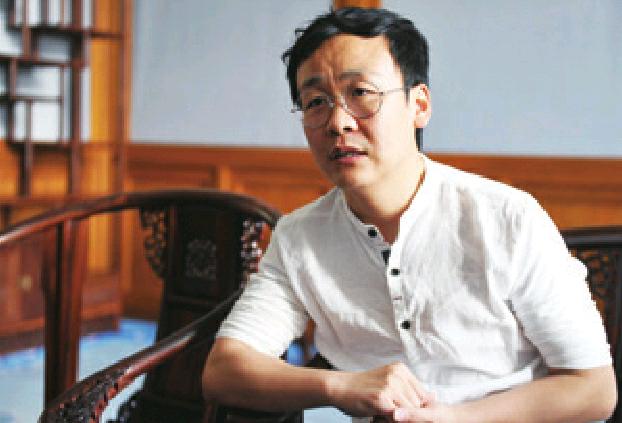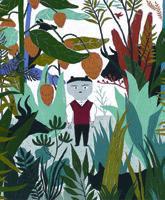A Budding Art
2016-06-22ByWeiYao
By+Wei+Yao
Yue Shuai, an illustration teacher at the Guangxi Arts University in south Chinas Guangxi Zhuang Autonomous Region, never imagined that he would be selected for the prestigious Bologna Illustrators Exhibition in Italy. Unknown to him, his wife had submitted some of his drawings to the event last year, which were finally chosen for inclusion in the exhibition.
This year, some of the exhibitions works are being brought to China for display for the first time. Themed “encountering the most beautiful illustrations in the world,” their tour in China has stops in Beijing, Chengdu, Xian, Shanghai, Jinan and Shenzhen.
Created by the Bologna Childrens Book Fair in 1967, the Bologna Illustrators Exhibition offers artists from all over the world a unique opportunity to display their talent to key players in the publishing sector every year in Bologna. This years exhibition attracted submissions from 3,191 illustrators from across the globe, with 77 eventually chosen, including five from the Chinese mainland.
Inadequate attention
Sixty-eight-year-old Zhu Chengliang was one of the Chinese illustrators to be honored this year. He created his first illustrated book, Two Brothers, way back in 1980 and his 2008 work Reunion won him the first place in the Feng Zikai Picture Book Award, Chinas most prestigious award for picture books.
Reunion has also won international acclaim. The New York Times Book Review, one of the most influential and widely read book review publications in the United States, placed it on its list of the Ten Best Illustrated Childrens Books in 2011. However, for a long time, illustrations have not been afforded sufficient importance in Chinas art community.
Yue said that in order to be promoted in academic rankings he has to take part in exhibitions and publish his work and theses. However, as illustrations arent as highly valued as other types of paintings in the evaluation system and there are few illustration exhibitions in China, he has to draw oil paintings to attain these opportunities.
The Guangxi Arts University is among the first batch of higher learning institutions to recruit illustration undergraduates. In most art universities, illustration is only one subject in a graduate program.
Although Yue has won many prizes for his oil paintings, he loves illustrations from the bottom of his heart. They may not bring as many economic benefits or career opportunities as other forms of paintings, but he persists in teaching and practicing his true passion.
Yue is optimistic about the future of illustrations in China. He told Beijing Review that most of his students became professional illustrators in publishing or advertising after graduation, while some have even started up their own studios. He believes the market is expanding rapidly and is large enough to support illustrators.
“As people become more affluent, they hold higher standards for their childrens art education,” Yue said.
However, in contrast to accomplished illustrators such as Zhu, budding illustrators like Yue and his students cannot live a decent life simply through illustrating alone. He said that one of his students made a mere 300 yuan ($45.6) for drawing an illustration for a publishing house, though it normally takes two to three days to complete such a task.
Bright prospects
Illustrators such as Zhu and Yue are gaining prominence in international illustration competitions thanks to the rapid expansion of the domestic cultural market driven by economic growth. People are attributing increasing importance to picture books for a childs healthy development. As a result, the demand for such books is rising.
Wang Zhigeng, Director of the Childrens Books Section of the National Library of China, said that children are more capable of appreciating the meaning and beauty of illustrations and they often begin enjoying picture books by hearing them as read by their parents. This cannot only improve childrens eloquence but also stimulate their imagination.
Cao Wenxuan, Chinas first winner of the Hans Christian Andersen Award who nabbed the most important international prize in childrens literature in April, believes that Chinese picture books will experience a boom.
“There is a big difference between children who have read picture books and those who havent,” said Cao, who has been dedicated to childrens literature for more than 30 years.“The concept of picture books has taken root in peoples minds and thousands of picture book libraries are sprouting up across the country.”
However, the market is still at a nascent stage of development. Both illustrators and publishing houses are inexperienced.
Wang described the overall quality of Chinas illustrations as mediocre.
“Chinese picture books should tell their own stories. An outstanding illustrator should be able to produce stories which transcend cultural boundaries. Unlike other genres of books, picture books neednt be translated. Their charm is that they enable children around the world to share a moment of joy when they read the same page,” Wang added.
